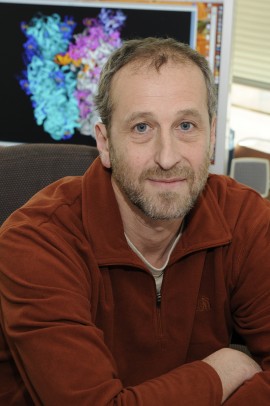Understanding antibiotics
Powerful antibiotics that scientists and physicians thought stop the growth of harmful bacteria by completely blocking their ability to make proteins actually allow the germs to continue producing certain proteins — which may help do them in.
The finding, by a team in the College of Pharmacy, clarifies how antibiotics work and may aid in the discovery of new drugs or improve clinical therapy with existing ones.
Among the most complex molecular machines in the cell are the ribosomes, responsible for churning out all the proteins a cell needs for survival. In bacteria, ribosomes are the target of many important antibiotics, says Alexander Mankin, professor and director of the Center for Pharmaceutical Biotechnology, who led the study.
Mankin and his colleagues picked apart the process of protein synthesis inside the ribosome, comparing the action of the classic antibiotics erythromycin and azithromycin and newer drugs called ketolides, which are used to treat serious infections.
Surprisingly, the more powerful drugs were the more “leaky” in blocking the production of proteins.
“We were shocked to discover that ketolides, which are known to be better antibiotics, allow for many more proteins to be made compared to the older, less efficient drugs,” Mankin said.
“We now believe that allowing cells to make some proteins could be much more damaging for a microbe than not letting it make any proteins at all.”
The findings may point the way to better and more potent antibiotics, Mankin said. But he and colleagues are “thinking beyond just antibiotics.”
“If a chemical can be designed that binds to the human ribosome and allows it to make good proteins but not bad ones, such as mutant enzymes or proteins that promote cancer, then such new drugs can treat many human maladies,” he said.
Co-authors on the cell paper are graduate student Krishna Kannan and research associate professor Nora Vazquez-Laslop. The study was funded by the National Science Foundation.
samhos@uic.edu

